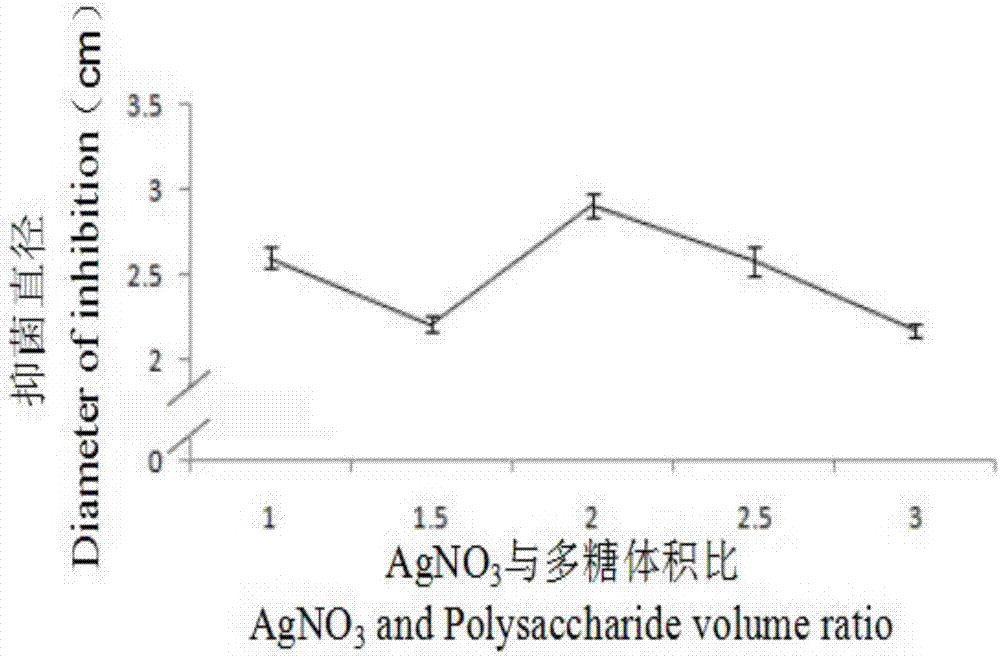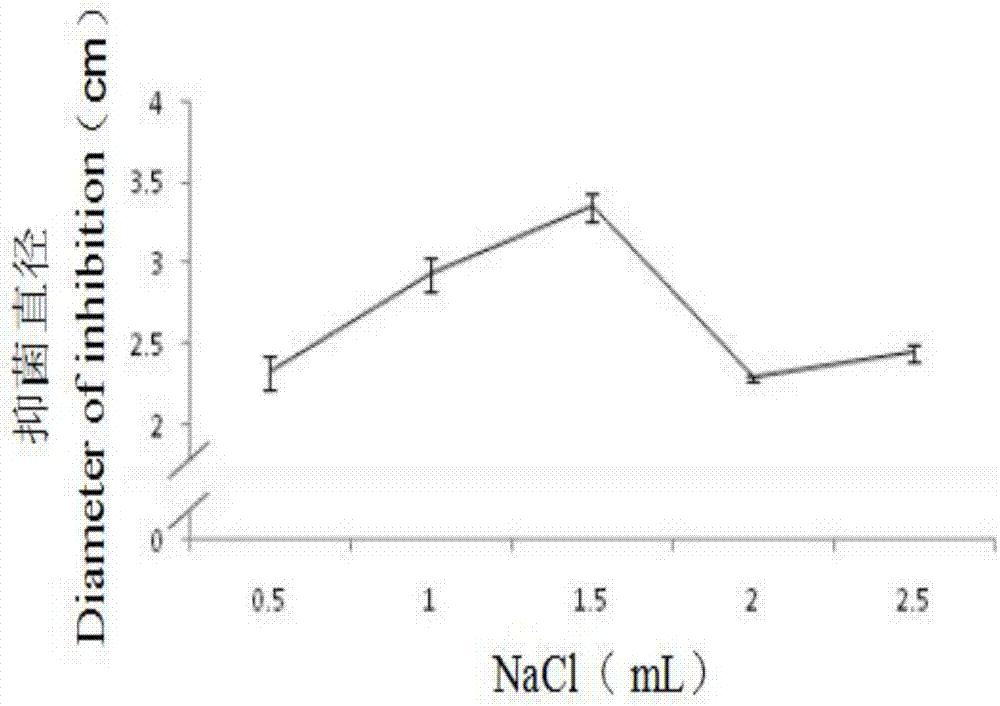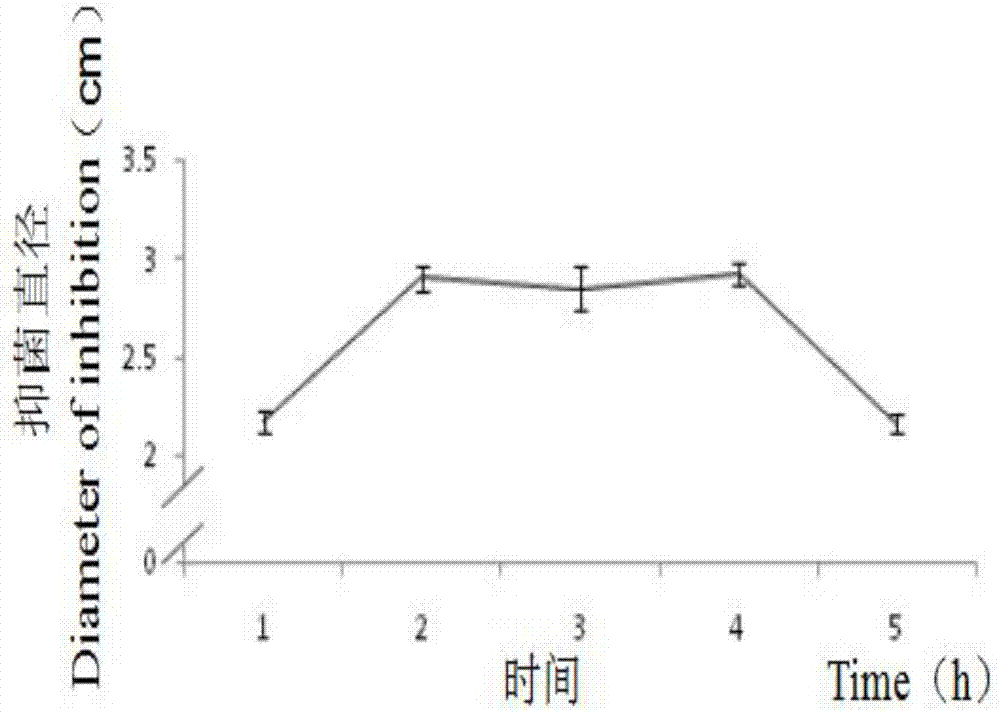Method for preparing nano-silver composite particles from emblica polysaccharide
A technology of composite particles and emblical polysaccharides, which is applied in the field of nanomaterials, can solve the problems of reducing the surface activity of nanoparticles, environmental pollution, and affecting the performance of nanoparticles, so as to achieve the effect of improving the utilization value and green process
- Summary
- Abstract
- Description
- Claims
- Application Information
AI Technical Summary
Problems solved by technology
Method used
Image
Examples
Embodiment 1
[0030] Embodiment 1 Preparation of emblical polysaccharide and nano silver
[0031] The first step: preparation of emblical polysaccharide: samples of emblica (powdered ganache) were collected from Lantian Village, Zishan Town, Hui'an County, Quanzhou City, Fujian Province. The preparation of emblica polysaccharide (Emblica Polysaccharide, EPS) first selects fresh and disease-free emblica fruit, washes, air-dries, removes the core, freeze-dries, passes through a 40-mesh sieve to obtain emblica powder, extracts in hot water for 5 hours and centrifuges Take the supernatant to obtain the emblica extract, concentrate by rotary evaporation, dehydrate with ethanol, and dry repeatedly with ether to obtain the crude polysaccharide of emblica, and finally obtain the crude polysaccharide of emblica through freeze-thaw classification, Sevage method for protein removal, dialysis, rotary evaporation, concentration and freeze-drying to obtain emblica polysaccharides.
[0032] The second st...
Embodiment 2
[0033] The carrying out of embodiment 2 antibacterial test
[0034] The first step: plate method detection antibacterial test: this test selects AgNO 3 The three factors of polysaccharide volume ratio, reaction time and NaCl volume were used for single-factor antibacterial test, and each factor took five levels respectively. Staphylococcus aureus was used as the test strain, and the plate method was used to carry out antibacterial test to detect the antibacterial ability of AgNPs. The AgNPs powders prepared under different conditions were prepared into 10 μg / mL AgNPs solutions with double distilled water, and ultrasonicated for 30 min to disperse the solutions evenly before use. In the bacteriostasis test, the activated bacterial liquid was added to the LB solid medium at a ratio of 1%. After the medium plate was solidified, a 6mm circular filter paper was placed in the center of the LB medium, and the filter paper Spot 15 μL of prepared different AgNPs solutions on the top ...
Embodiment 3
[0038] Embodiment 3 response surface test
[0039] Step 1: According to the single factor test results and the Box-Benhnken center combination test design principle, continue to optimize the conditions for preparing AgNPs from emblical polysaccharide within the test range. Wherein with the size (Y) of the inhibition zone as the response value, the best three-factor combination obtained according to Example 2 is respectively AgNO 3 The volume ratio to polysaccharide (A), NaCl volume (B), and time (C) are three factors, and the response surface optimization experiment is carried out with 3 factors and 3 levels, and each experiment is repeated three times. There are 17 test points in the response surface analysis test, including 5 zero points and 12 analysis point tests, which are used to estimate the test error. The test factors and levels are shown in Table 1.
[0040] Table 1 Response surface analysis factors and levels
[0041]
[0042]
[0043] The second step: data...
PUM
| Property | Measurement | Unit |
|---|---|---|
| diameter | aaaaa | aaaaa |
Abstract
Description
Claims
Application Information
 Login to View More
Login to View More - R&D
- Intellectual Property
- Life Sciences
- Materials
- Tech Scout
- Unparalleled Data Quality
- Higher Quality Content
- 60% Fewer Hallucinations
Browse by: Latest US Patents, China's latest patents, Technical Efficacy Thesaurus, Application Domain, Technology Topic, Popular Technical Reports.
© 2025 PatSnap. All rights reserved.Legal|Privacy policy|Modern Slavery Act Transparency Statement|Sitemap|About US| Contact US: help@patsnap.com



